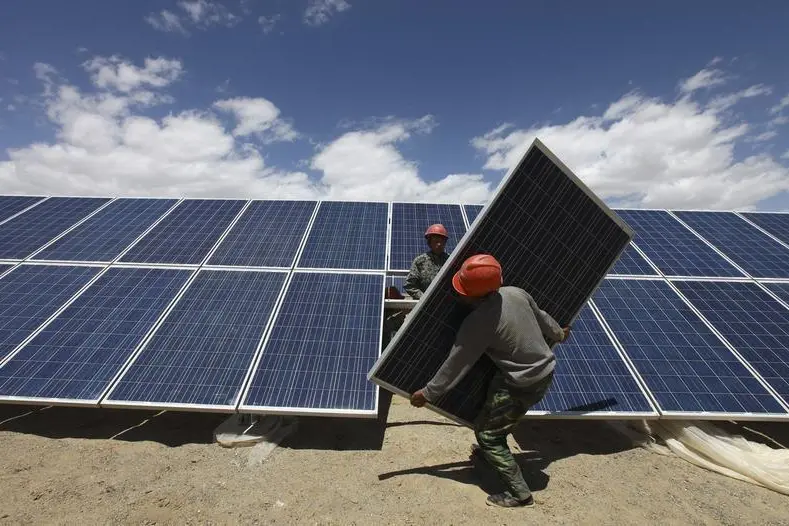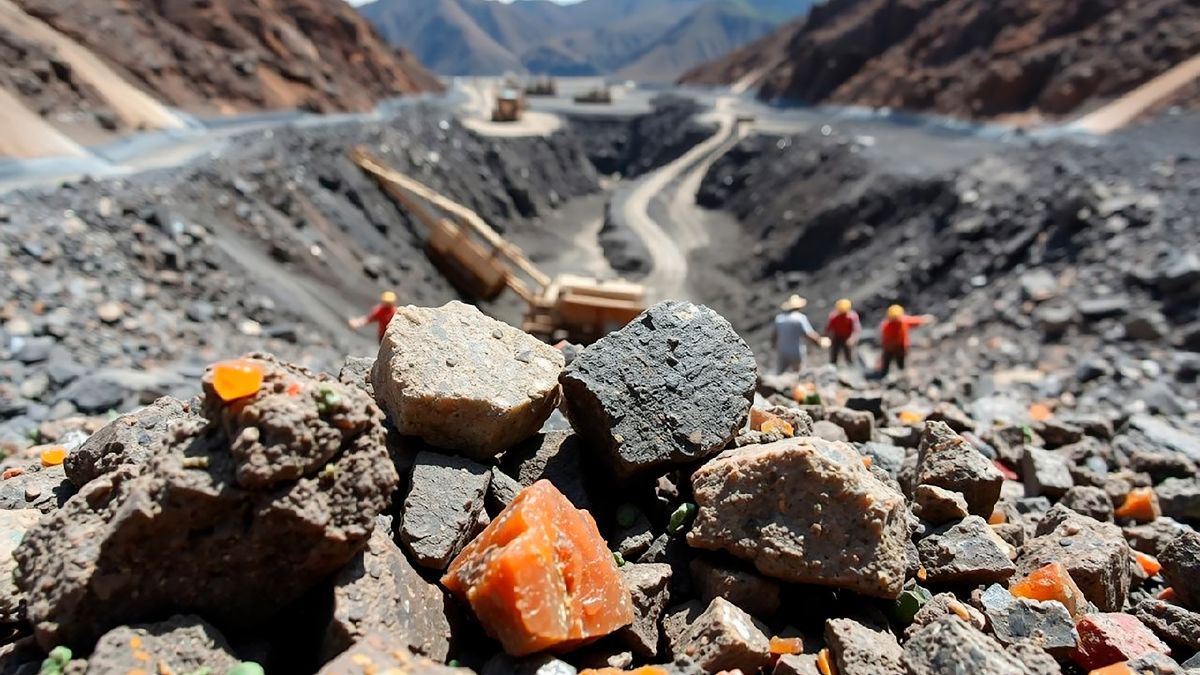.png)
Morocco Secures US Backing for $800M High Purity Polysilicon Plant: A Strategic Move to Reshape Global Supply Chains

Morocco Expands Solar Infrastructure with Two New Power Stations in Khouribga

Argentina is a country with significant potential for renewable energy. With its vast natural resources, such as solar, wind, hydroelectric, biomass, and hydrogen, as well as its growing commitment to sustainability and reduction of carbon emissions, the country is well positioned to become a leader in the renewable energy market.
The government of Argentina has set ambitious targets for renewable energy. The country’s National Energy Plan calls for 20% of the country’s energy to come from renewable sources by 2025. Additionally, the government has set a goal to achieve 30% renewable energy by 2025 and 35% by 2030.
The government has also implemented several policies to support the growth of renewable energy in the country. One of the key policies is the Renovation Program for Renewable Energy Sources (RenovAr), which provides financial incentives for the development of renewable energy projects; the program includes subsidies, tax exemptions, and soft loans for the construction of renewable energy projects.
Another important policy is the Renewable Energy Certificates (RECs) system, which is designed to support the development of renewable energy projects. Under this system, energy companies that generate electricity from renewable sources receive certificates that can be sold to other companies that are required to meet renewable energy targets. This helps to ensure a steady stream of funding for renewable energy projects.
The Argentine government has also established the National Energy Efficiency Plan, which aims to reduce energy consumption and promote energy efficiency. The plan includes measures such as building codes, appliance standards, and financial incentives for energy efficiency projects.
The private sector is also playing a significant role in the development of renewable energy in Argentina. Several companies are investing in renewable energy projects; some of the major players in the renewable energy market include YPF, Genneia, Pampa Energia, Enel Green Power, and 360 Energy.
In Argentina there are around 900 wind turbines, which, thanks to the wind, generate 10% of the country’s total electricity consumption or, in other words, the equivalent of supplying more than 2.7 million homes. They are grouped into 57 wind farms that are distributed mostly in Chubut, Buenos Aires, Santa Cruz, La Rioja, Córdoba, Neuquén and Río Negro.
Despite the progress that has been made in the renewable energy market in Argentina, there are still several challenges that need to be addressed. One of the major challenges is the lack of transmission infrastructure, which makes it difficult to transport electricity generated throughout the country.
The following are some of Argentina’s most iconic solar, wind, green hydrogen, hydroelectric and lithium projects; the latter can be described as the non-renewable mineral that makes renewable energy possible.
Argentina’s state-owned power company Jemse built the country’s largest photovoltaic installation between 2017 and 2020, as part of the RenovAr large-scale renewables programme. So far, the 300MW project has produced more than 1 million MWh of clean electricity and is now set to expand to 500MW, with the addition of 30MW/100MWh of storage.
The 300MW asset was financed with funds from the Export-Import Bank of China and a USD $210 million bond issued by the Argentinean province of Jujuy. Jemse has full ownership of the project; Huawei was the supplier of the string inverters in the first phase and probably for the second phase.
The USD $60 million Sierras de Ullum Solar Project (80MW) is located in the south-central part of the province of San Juan, next to the Ullum Solar Park (82MW), Genneia’s first photovoltaic centre. The project is designed to meet the energy demand of large industrial users, within the framework of the Renewable Energy Term Market.
The project consists of 154,000 photovoltaic panels, and has an annual production capacity of 197,000 MWh, supplying 50,000 homes and offsetting 89,000 tons of carbon dioxide emissions a year. Sierras de Ullum will generate 6% more energy than solar parks with mono-facial photovoltaic panels.
The 30MW solar park is located in La Rioja and will be connected to the Argentinean interconnection system of the Chamical Transformer Station.
Los Teros Wind Farm is a 174.56MW onshore wind power project, and is located in Buenos Aires. The project has been developed in multiple phases; the project got commissioned in September 2020. Phase 1 consists of 32 turbines, each with 3.83MW nameplate capacity, and Phase 2 consists of 13 turbines, each with 4MW nameplate capacity.
The USD $235 million project developed and owned by YPF generates 550,000MWh electricity and supplies enough clean energy to power 228,000 households, offsetting 8,800,000 tons of carbon dioxide emissions a year.
The USD $2.2 billion plant near the town of Pico Truncado, in the Santa Cruz province, will have 450 wind turbines and produce 3,421MWh.
Although the project is awaiting the construction decision, it has a project capacity of 19 kilometres of 500kV transmission lines, and 900MW of onshore wind.
Loma Blanca 6 wind farm is a 102.4MW onshore wind power project, located in Chubut. The USD $190.6 million project was commissioned in June 2021, and generates 441GWh of electricity.
The project was developed by Isolux Corsan Energias Renovables and Xinjiang Goldwind Science & Technology, and is currently owned by Xinjiang Goldwind Science & Technology.
This USD 8.4 billion project consists of the construction of a green hydrogen plant near Sierra Grande in the Río Negro province. The initiative also involves the construction of a wind farm that will feed the hydrogen plant and an export port near the town of Punta Colorada. A solar plant would also be required, either in Salta or Jujuy, to compensate for the intermittent wind in Río Negro. The initiative will allow the creation of more than 15,000 direct jobs and be developed in 3 stages.
The project has a capacity of 2,000MW (500MW photovoltaic, and 2.2Mt/y green hydrogen), and is due online in December 2030.
This USD $6 billion project involves the production of green hydrogen through 300 wind turbines with special characteristics due to the wind conditions in Tierra del Fuego. It involves the construction of a wind farm, a desalination plant, a green hydrogen and ammonia production plant and port facilities that enable export.
The project is currently in the early design and engineering stage, and has a capacity of 1.5Mt/y green hydrogen, and 3,200MW onshore wind. The project is due online in December 2028.
Argentina occupies the fourth position in the list of top hydropower producing countries in South America, with an installed capacity of 11.2GW. Hydroelectricity is the third-largest primary energy source for the country, after natural gas and oil.
Voith Hydro and the country’s National University of La Plata (UNLP) agreed to undertake a collaborative hydropower study looking at modernisation of the existing Argentinian large hydropower plants.
Some of the major operational hydropower plants in the country include the 3.1GW Yacyretá HPP, the 1,890MW Salto Grande HPP which is shared with Uruguay, the 1,400MW Piedra del Águila HPP, the 1,260MW El Chocón HPP, and the 1,050MW Alicurá HPP.
Cauchari-Olaroz is located in Jujuy Province in north-west Argentina. The Project is situated in the Salar de Olaroz and Salar de Cauchari, adjacent to Orocobre Ltd.’s Olaroz facility, which has been in production since 2015. Cauchari-Olaroz is well serviced by nearby infrastructure including major paved highways, a national and international rail link which connects to the port of Antofagasta in Chile, a high-voltage power grid, and a gas pipeline.
The USD $852 million project produces 40,000 tons per annum of lithium carbonate (Phase 1), and planning is underway for an expansion of at least 20,000 tons per annum (Phase 2). The project is owned by Lithium Americas (44.8%), Ganfeng Lithium (46.7%), and Jemse (8.5%), and has a lifespan of 40 years.
In December 2022, Y-TEC, a company that is part of state-owned energy giant YPF, announced that it will produce its first pilot models of lithium batteries, after taking delivery for components in October 2022. The lithium cells and batteries manufacturing plant’s capacity will be 13MWh, equivalent to 1,000 batteries for stationary energy storage of renewable energy, or around 50 batteries for electric buses.
The plant will create 50 direct jobs and required USD $770 million in investment, with USD $210 million coming from the Science and Technology Ministry, and USD $280 million each from the UNLP and Y-TEC.
.png)

